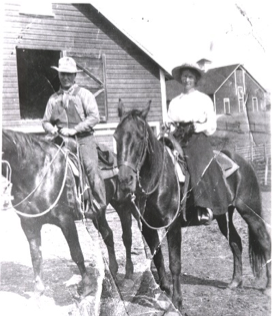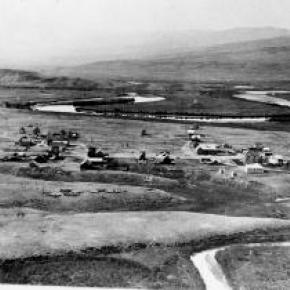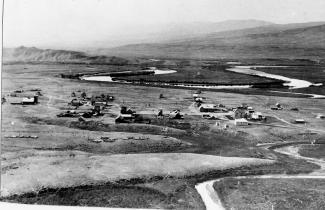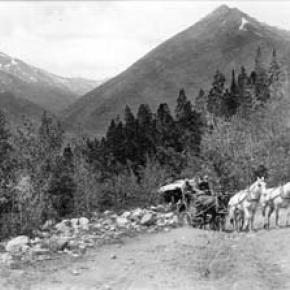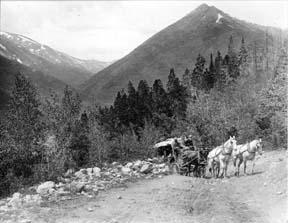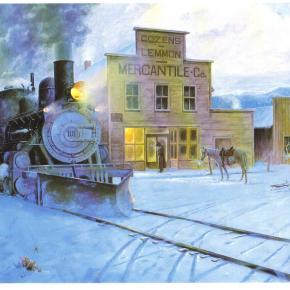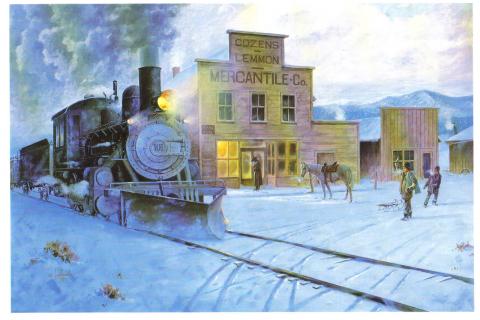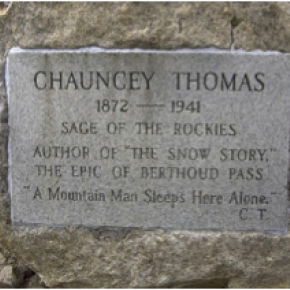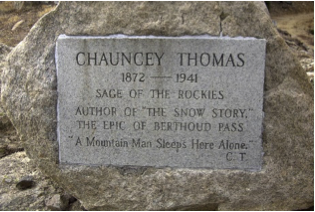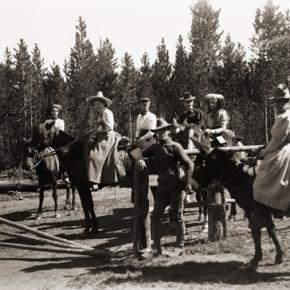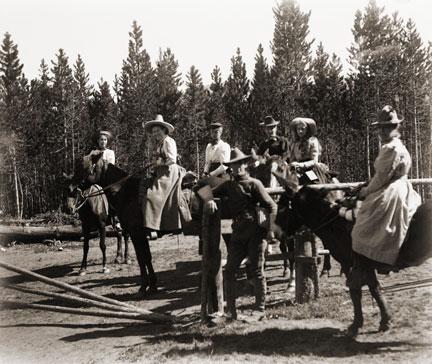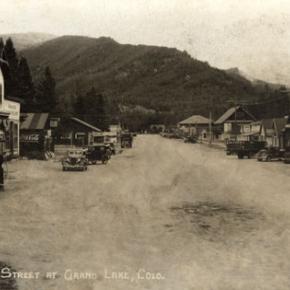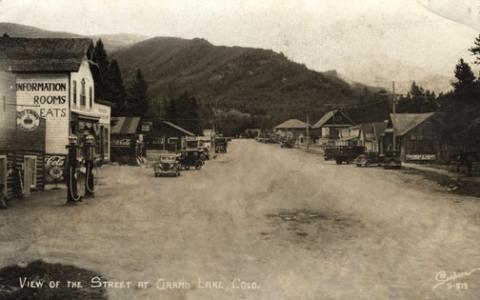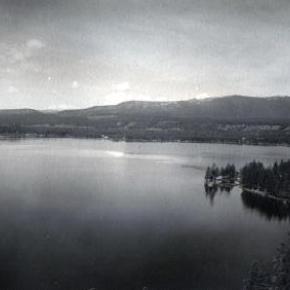Voices of Middle Park
Featured Video
Voices of Middle Park Articles
| Jacob Pettingell - An interview from 1931 |
Jacob Pettingell - An interview from 1931
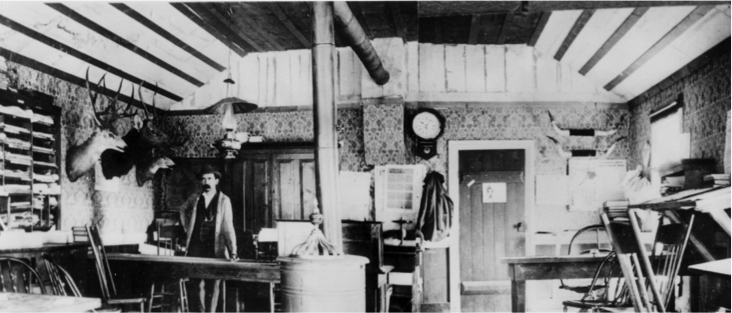
Transcribed by Dan Nolan In 1880, Jacob Pettingell moved to Grand County at the age of 20. He spent the rest of his life here serving as postmaster, notary public, insurance agent, abstracter, legal counsel, justice of the peace and county clerk. The following is part of an interview conducted by his son-in-law Victor Frey in 1931. Company of soldiers Fish & game Town of Kremmling Williams Fork Town of Grand Lake Sandy Campbell and Jim Bowen were the first prospectors. The price of silver was high, and most of these mines were for silver. These mining towns sprang up around 1880-81. I originally came west to spend about three months in Middle Park, hunting and fishing, but when the mining boom struck this locality, I became interested. I grubstaked two men; later I took up a claim above the old Wolverine mine for silver and mined for 7 or 8 years. It was a paying proposition while silver was up in price but on account of the long freight haul and drop in price, the mine was later abandoned. Estimated population during boom days: Gaskill 150; Lulu 200; Teller City from 1,200 to 1,500. It was claimed that Teller City had 27 saloons. My personal recollections are that they might have had as many as 20 at one time. The Famous Foot Race The Mock Trial They held open court and the house was packed, not only with local people, but about 20 tourists were present. The defense attorney spent much of his time describing the wonderful scenery around Grand Lake and Colorado in general. The prosecuting attorney prosecuted hard and produced a witness who claimed he actually recognized the accused man and stated there was no doubt but what he was the guilty party. About the time the jury was to have the case, it was framed that I should commence a heated argument across the room with Gil Martin. When I jumped up and called Martin a liar, he opened fire with blank cartridges across the room: I commenced returning the fire. There was a great commotion, people actually jumping out thru the windows and a wild scramble thru the doors. The frightened defendant escaped into the timber. It rained all that afternoon. We later succeeded in convincing his partner that it was a joke, so he finally brought the defendant in that night, dripping wet and still badly frightened. They all pulled out of Grand Lake before morning. First Courthouse The Duel The commissioners met at Grand Lake on July 3, 1883; they all agreed to adjourn until July 4 because Mills had an important case in court that day. Mills went to court but Day and Webber went to the Nickerson House and held a commissioners meeting there. At this meeting they raised the amount of bonds for county officers, making same so high they knew none could comply. As I recall, the sheriff’s bond was around $50,000. This caused the sheriff and under-sheriff to throw in with Mills. The next day was Fourth of July and many people were shooting out into the lake, there being considerable noise. Cap Dean, Barney Day and Webber left the Young Hotel (where I was also stopping) and started down town. No one knew just what did happen or who fired the first shot. There were some extra shots in that direction: someone thought they saw a man fall to the ground; we all ran down to the spot which was about 500 yards from the Young Hotel. Mills was lying in the road; Barney Day part way in the water; both Dean and Webber had been carried into the hotel. Day and Mills died instantly, while Webber lived until around 2 A.M. the next morning. I sat by his bedside. Cap Dean lived 4 or 5 days although he was shot to pieces. I sat beside Dean’s bed and asked him who did the shooting and he replied that he did not care to say. Later, he described one tall man with a handkerchief over his face who attacked him and it fit the description of Bill Redman. It was thought that Mills opened up the attack by firing his rifle. The sheriff and undersheriff both escaped. They first came to Sulphur and tried to organize a posse but the people seemed to mistrust them and they left the country. Later, Chas. Royer, the sheriff, committed suicide. Bill Redman had been a great pal of Royer’s and when he picked up a paper reading about Royer, he also committed suicide. Therefore, this cost the lives of 6 men. Firsts in Grand County: The First Newspaper The First Auto The First Train The Grand Hotel Conclusion
|
||||
| Video: Betty Birdsill & Maryan Pharo Part 1 |
Video: Betty Birdsill & Maryan Pharo Part 1
The Voices of Middle Park Project is up and running! If you are interested in helping to capture the living history of Grand County through videos or audio interviews….or if you have a potential interviewee in mind, Contact Dede Fay at 970-531-7020 for more information. Watch an interview with Betty Birdsill and Maryan Pharo |
||||
| Video: Betty Birdsill & Maryan Pharo Part 2 |
|









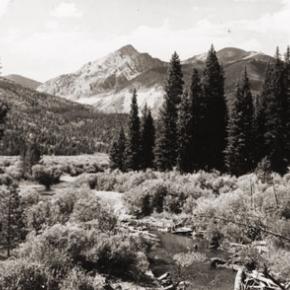
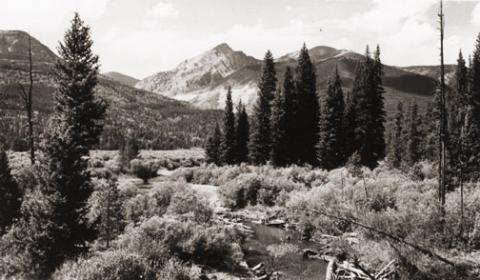
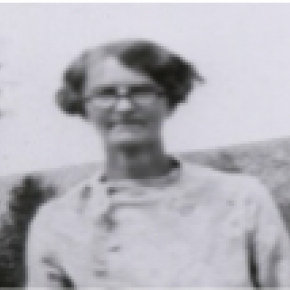
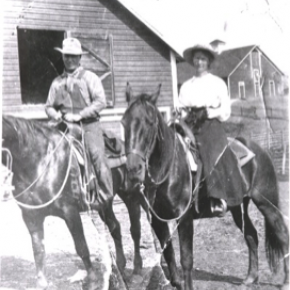
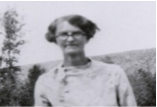 ,
, 